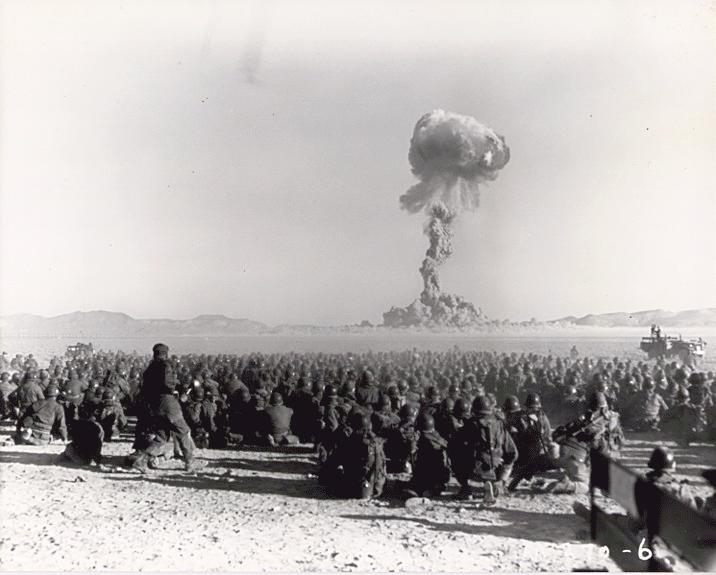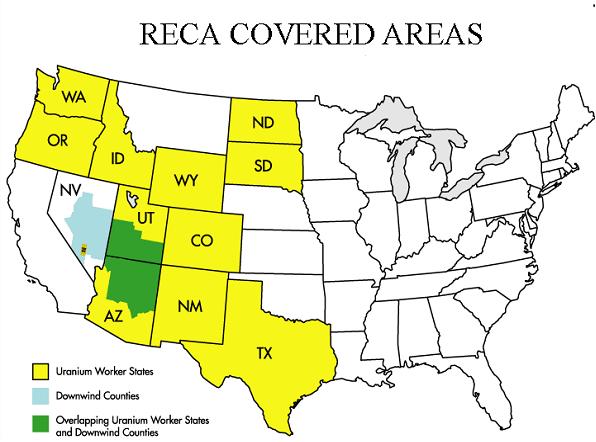COLUMN: Fallout Utah—The History of Utah’s Radioactivity Problem
Editor’s Note: To submit a response to this column, or submit a letter to the editor on a new topic, email your submission to opinion@usustatesman.com.
By Kristian Fors and Brandon Christensen
The fallout from the nuclear weapons tested in Nevada by the Atomic Energy Commision is a tragic part of Utah’s history that has somehow been lost from common public knowledge. Utah experienced long lasting negative consequences as a result of these tests. The primary source of the problem was that radiation was carried by the wind and weather patterns and was blown into Utah, sometimes through rain and snow. This fallout not only indirectly targeted the populace but also corrupted the food and water supply. In this time period, many Utahns had personal gardens and when these gardens were hit with radiation, the result was unsafe radioactive vegetables. A common practice among children during this time period was making ‘ice cream’ with fallen snow. These children were directly ingesting nuclear fallout with their makeshift ice cream. The sheep were some of the first to be affected. The government issued warnings to sheep owners, but did not give time or clear instructions to move these tens of thousands of sheep to another less susceptible location. The resulting damage was clear, as many sheep started to grow sores, defects or simply die from the poisoning.
The toll of the radiation did not only livestock but raised many concerns for people living in southern Utah. A famous public service announcement entitled Atomic Bomb Tests in Mercury, Nevada gave vague instructions to residents of St. George, Utah in regards to procedure for when the Atomic Energy Commision tested nuclear bombs in eastern Nevada. The film itself has a central contradiction of advising people to ‘stay inside’ during the bombing to avoid unnecessary radiation but also portraying the testing as ‘nothing to worry about.’ In morbid irony, many of the actors in the film who were residents of St. George ended up dying from cancer-related issues. The death toll of this nuclear testing cannot be understated. During this time period, Utah saw increase in cancer rates that can be attributed to the nuclear fallout of the Nevada testings. Utah also has very high miscarriage and birth abnormality rates. The Atomic Energy Commision even made it a point to test the bombs on days with easterly winds so as not to spread the radiation to areas of higher population like California. In the following decade, further ariel nuclear experimentation was conducted at the Dugway Proving Grounds, leading to a mass death of sheep at Skull Valley. Eventually, people began to connect the dots as to why Utah was suffering from higher cancer rates. In 1984 a lawsuit against the federal government about the human radiation poisoning lost at the tenth circuit court. The prospect of thousands of people being affected by radiation from nuclear testing was frightening to the federal government from a legal standpoint. Radiation poisoning mutates DNA, and can affect people for generations. Until 1990, the federal government defunded research and turned down cases as to not be implicated in the radiation crisis.
Ultimately, the United States government acknowledged that radioactivity in Utah was a problem when the Radiation Exposure Compensation Act of 1990 (RECA) was passed. The function of the legislation was to provide monetary compensation to those who developed cancer as a result of the effects of both nuclear substance mining and nuclear bomb testing. The bill even identified specific counties in Utah that were affected by the fallout. Counties listed on the bill include : Beaver, Carbon, Duchesne, Emery, Garfield, Grand, Iron, Juab, Kane, Millard, Piute, San Juan, Sanpete, Sevier, Uintah, Washington, and Wayne. The mere number of counties affected shows the sheer magnitude of this issue. Downwinders can receive $50,000 in federal compensation for nuclear test radiation exposure. The areas covered by RECA can be seen in the map below:
Got milk?
One of the most radioactively susceptible food products is milk. During the fallout, milk from cows unwittingly became one of the primary diffusers of radiation poisoning. This was a particularly pressing issue in Cache Valley, since it was a heavy dairy producing region that received radiation from weather patterns that carried precipitation to the region. This issue was compounded by the government campaigns in the 50’s and 60’s that promoted heavy dairy consumption for healthy living and strengthening bones and teeth. Among other contaminated food products, the consumption of radioactive dairy exposed many to unnecessary risk of cancer.
In conclusion, this issue is a cause for concern and should not be taken lightly. Carcinogenic radiation can mutate DNA, creating the risk of passing on mutated DNA to the next generation which can cause all manner of health risks. It is important to regularly screen for potential health risks, especially if you or your family lived in Utah or the surrounding areas from 1951-1962 because you could have increased exposure to radiation and its harmful effects.
Kristian Fors is a student at Utah State University majoring in Finance and Economics and is an opinion columnist for the Utah Statesman. He can be reached at krfors@gmail.com.
Brandon Christensen is a student at Utah State University majoring in Economics with a minor in Japanese. He can be reached at brandonallenchristensen@gmail.com


